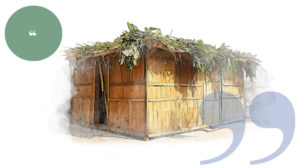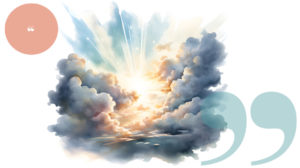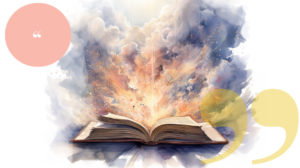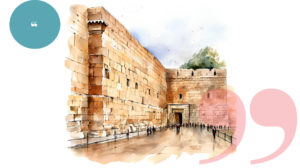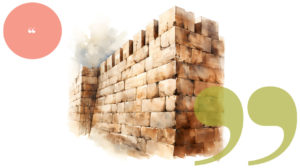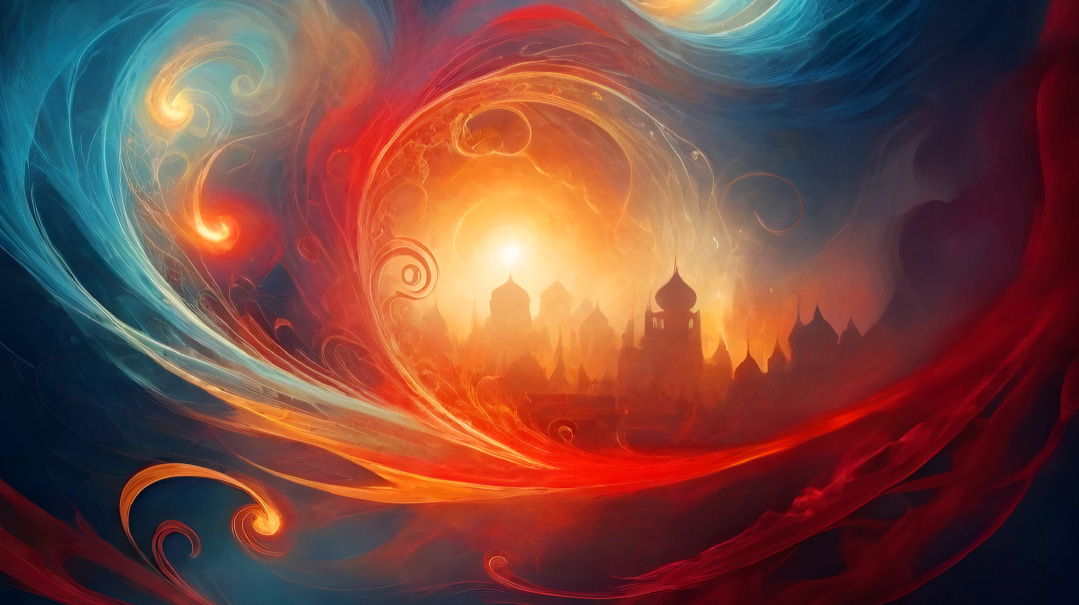Finding our Shepherd
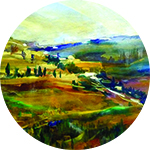
Sometimes we’re in pain. Sometimes we’re confused. How can we nevertheless point to Hashem’s loving, guiding Hand?

It’s just a few weeks since Pesach, since we left Egypt. Then, we stood at the sea, the walls of water towering over our heads, presented with delectable fruits and garlands of flowers, our greatest fears consumed and drowning in the swirling sea behind us. Kriyas Yam Suf, where every single Jew was able to gaze, point, and proclaim: “Zeh Keili — This is my G-d.” Hashem’s love was so tangible that we could almost hold it in our hands.
Two thousand years later, immersed as we are in the daily crises — small and large — of our flurried lives, we stand at the sea, mute and paralyzed.
I’m often asked to address different groups of women — and whether they are childless, widowed, single, divorced, or sick, the common denominator is their pain. They stand at the swirling sea and plead: “We want to call out Zeh Keili! We want to see the purpose in our lives and our suffering.”
But it’s not always so easy. Sometimes we’re in pain. Sometimes we’re confused. How can we nevertheless point to Hashem’s loving, guiding Hand?
The Chance to Choose
In my work, I often come into contact with people who suffer the trials and tortures of neurological and physiological disease. Talking to and helping people who battle limitations highlights our greatest and oft-forgotten gift — bechirah chofshis, free will. My suffering may be imposed on me from outside, but my choices and actions can be mine and mine alone. They are the product of my choice, my bechirah, which comes from a place inside that is authentic and real.
My body, after all, is but a garment for my soul. While clothing may become ripped, old, and worn, my neshamah remains impervious to that pain, pristine in its connection to the Divine. And I can connect to that pure place within. While this may sound theoretical, a madreigah too high to aspire toward, it has been achieved by Jews throughout the ages.
It was achieved in the concentration camps, as the inmates maintained their dignity and pride though their physical existence was reduced to less than that of animals. It was achieved by Tamar Fogel who, at the shivah for her parents and three siblings, brutally murdered in Itamar, went from person to person, telling them, “What G-d does is for the best.” It was achieved by Mrs. Chava Sandler of Toulouse, who, in her open letter to world Jewry, begged us all to increase Torah learning, and add light to the world by kindling our Shabbos lights early. Souls can and do transcend the limitations of our physical bodies — and circumstances.
Each day, we wake up and say the words of Modeh Ani: “Thank You, Hashem … that you returned my neshamah ...” Come night, we close our eyes with the words of HaMapil: “Light up my eyes lest I sleep the sleep of eternity, for You, Hashem, open all eyes ...” Each morning, our souls are returned to our bodies, ready for a new day of struggle and growth.
Bi nishmasi! The exact location of the soul has puzzled philosophers for centuries. Aristotle argued that the soul lay within the heart, the seat of passion. Chazal, however, taught us that our soul’s place is in the brain — a fact that can be corroborated by any heart surgeon. Modern-day medicine can transplant many vital organs — yet, one’s dreams and fears, hopes and pain are not transplanted along with them. These reside within one’s mind, within the mystery of one’s brain, and are uniquely ours.
Our brain, the seat of our neshamah, is the GPS system that guides us through our unique travels in life. Unlike the bossy lady in my car who is programmed, and cannot alter her course independently, our internal system is programmed to enable our choices to determine the course we will take.
We’ve left Egypt. We’re journeying to Sinai, to the level at which we can say naaseh v’nishma. We’re metamorphosing from slaves, whose every action is dictated, to people with the freedom to choose. And, says Rav Shlomo Wolbe ztz”l, our personal journeys should reflect this dynamic.
Flashes of Light
At the start of our travels, we are enslaved to our nisyonos. We are trapped in pain and frustration, helpless in our lack of control. As Dovid HaMelech wrote, we are the archetypal “seh oved,” a lost lamb. Surrounded by overgrown grass and foliage, it stretches its neck to catch a glimpse of its shepherd.
Our challenges, we come to realize, are uniquely ours, they are tailored to our lives. Often, when we take a step back and examine the situation that is so searing in its pain, specific details jump out at us. An aspect of the struggle was lightened — through a caring friend, a doctor who took the extra few minutes to listen, a teacher willing to go the extra mile.
And when we examine the way the pain is growing us as people, how our characters are slowly being refined and forged, we see that our Shepherd is, indeed, planning each detail of our course. Those moments of comfort and light even within the most agonizing darkness are the lightning flashes that show us how Hashem is with us all the time; that we can indeed proclaim, “Zeh Keili!”
From falling to the depths, one can rise; from darkness, one can appreciate light; from a place of confinement, one can enjoy freedom, the Yalkut Shimoni teaches us. It’s the sense of being lost, like the sheep in the grass, that provides the joyful relief that washes through us when we realize we are “found.” This feeling is a safety net that we can cling to — the knowledge that within the maze, we have a Guide. And this Guide has mapped out the bumps in the road.
When Moshe Rabbeinu asked for a revelation of Hashem, the Midrash tells us that Hashem showed Moshe the knot of His tefillin. Tefillin are knotted at the back of the head, and from there the two straps descend over the shoulders. The baalei mussar explain the profound message that Hashem was sending Moshe. There is One True Judge. He metes out both din and rachamim in this world. Emes, truth, is perfection that is undiluted by any distraction or personal agenda or feelings. When we call Hashem the Dayan HaEmes, we pay tribute to the fact that even in our greatest moments of pain, we know that our rational understanding is completely eclipsed in the face of the perfect Judge of truth.
This realization enables us to plow through the high grass and pause to reflect that He is guiding us to calm waters. It is that pause and reflection that enables a person to hold on to her bechirah chofshis, her choice for sanity in a world that constantly challenges that choice.
As we climb the ladder of sefiras haOmer and step closer each day to our own Matan Torah, let us prepare to proudly declare “Zeh Keili — this is my G-d!” He is my Shepherd, and therefore I can walk without fear.
(Originally featured in Family First, Issue 288)
Oops! We could not locate your form.
